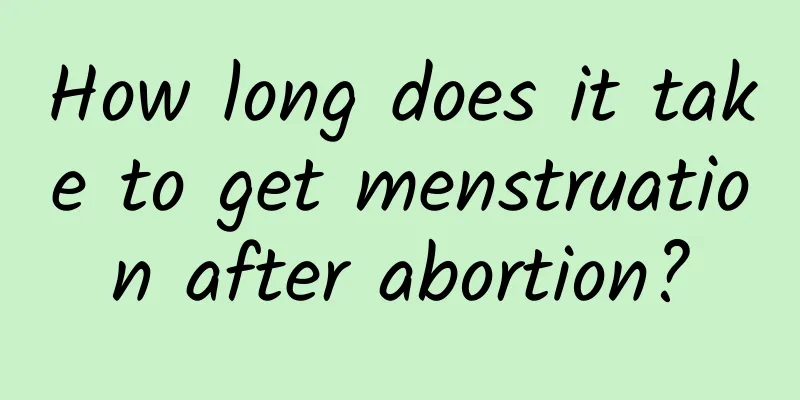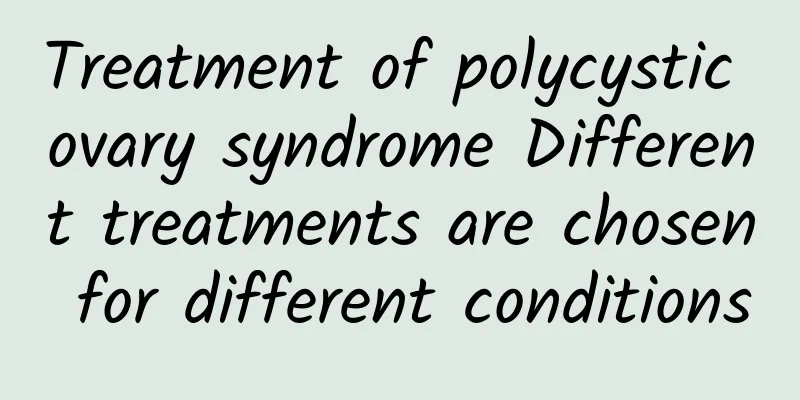Can amenorrhea be cured?

|
There are currently three main methods for treating female amenorrhea. If amenorrhea is caused by lifestyle problems and non-infection, it can be treated through diet therapy. If amenorrhea is caused by disease, it must be curbed through drug treatment. In the most serious cases, surgery must be taken. In the later stages, you must pay more attention to yourself and improve your ability to protect yourself. Here I will introduce to you the current methods of treating amenorrhea. 1. Treat the organic lesions that cause amenorrhea For patients with intrauterine adhesions, the uterine cavity can be dilated, adhesions can be separated, an intrauterine contraceptive device can be placed to prevent re-adhesion, and estrogen and progesterone can be used to promote endometrial hyperplasia and exfoliation. For ovarian or pituitary tumors, surgical treatment can be performed after diagnosis. For patients with genital tuberculosis, anti-tuberculosis treatment is given. 2. Estrogen and progesterone replacement therapy For patients with congenital ovarian hypoplasia, or ovarian failure caused by ovarian function suppression or destruction, exogenous ovarian hormone replacement therapy can be used. These patients lack normal follicles and oocytes and do not secrete sex hormones. If estrogen or estrogen and progesterone are given for artificial cycle therapy, the physiological and psychological state of estrogen deficiency can be corrected, the development of reproductive organs and secondary sexual characteristics can be promoted to a certain extent, sexual life can be improved, and periodic withdrawal bleeding similar to menstruation can be caused. 3. Induce ovulation For patients who desire fertility and have not lost ovarian function, hormones or analogs can be used to induce ovulation: ① For those with pituitary insufficiency, follicle-stimulating hormone (hMG) extracted from the urine of postmenopausal women can be used to promote follicle development and estrogen secretion, and combined with human chorionic gonadotropin (hCG) for treatment, the ovulation success rate is high. ② For those with normal pituitary and ovarian function but insufficient or uncoordinated hypothalamic function, clopidogrel can be used to correct the function of the hypothalamic pituitary-ovarian axis and induce ovulation. ③ For amenorrhea caused by endogenous LHRH deficiency, the pulsed micro-LHRH injection method to induce ovulation has a good effect. ④ For patients with hyperprolactinemia, bromocriptine can inhibit the effect of prolactin, restore the secretion of gonadotropin, and thus induce ovulation. There are many factors that cause amenorrhea in women, and it is one of the diseases that must be identified before treatment. The complexity of treatment makes it very difficult to cure, and there are only three treatment methods, so patients must take more auxiliary measures and methods during the treatment process to treat the disease as soon as possible. |
<<: Can central amenorrhea be cured?
>>: Key points for daily care of patients with amenorrhea
Recommend
Peanuts have many benefits! Can eating peanut butter help you lose weight? Teach you how to eat peanuts
Peanuts have many benefits! Eating peanuts not on...
What are some good ways to prevent endometrial tuberculosis?
Endometrial tuberculosis is a common type of tube...
How should patients with cervical erosion eat properly? Women with cervical erosion should keep these dietary taboos in mind
In life, the high incidence of cervical erosion a...
How long should you wait after a miscarriage to have sex? What should you pay attention to after a miscarriage?
Generally, you need to wait one month after a mis...
How to differentiate acute leukemia from functional uterine bleeding?
Bleeding is one of the main clinical manifestatio...
Is it easy to get pregnant with hyperprolactinemia?
Is it easy to get pregnant with hyperprolactinemi...
Is it true that the lower the body fat percentage, the better? What body fat percentage is considered obese? Doctor Zhang Yuqin reveals: 4 major risks of low body fat in women
Control your weight to avoid obesity, and don'...
What are the symptoms of female pelvic inflammatory disease? There are acute and chronic types
Pelvic inflammatory disease can be acute or chron...
Postpartum adhesions at the internal cervical os
Postpartum adhesions at the internal cervical os ...
Choice of different treatment methods for threatened abortion
The name of threatened abortion sounds scary, but...
What are the symptoms of women's menopause "just beginning" and "about to end"? It is recommended to learn about it early
Ms. Li is a 48-year-old executive of a company wi...
New Taipei City sampled 2 items of snack food for school children and found they did not match the label
During the school summer vacation, the New Taipei...
Common symptoms of pelvic peritonitis
Pelvic peritonitis is a disease that many female ...
It’s not difficult to lose weight! 8 low-calorie foods to increase satiety and help lose weight
In fact, if you eat the right foods, you don’t ne...
Fresh milk, yogurt, and yogurt, which one is the "calcium leader"?
Have you taken calcium supplement today? Accordin...









